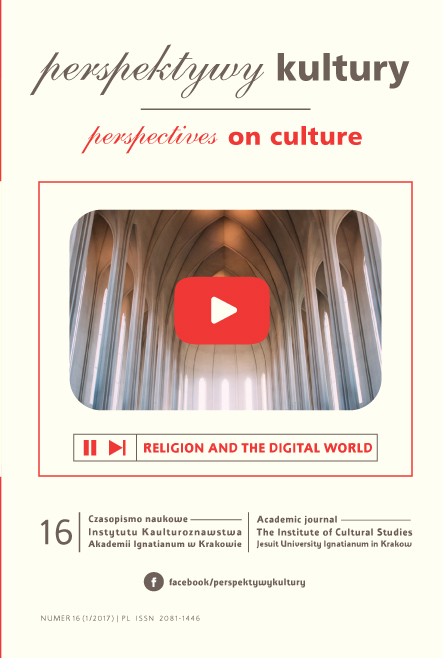Cultural Message Through the Specific Characteristics of New Media
Abstract
This study is primarily concerned with how the new media is current ly modifying the existing perception of journalism. The aim is not to summarize all new technologies and media, but to examine the spe cific characteristics of online media. This study strives to offer the most comprehensive view of specifics and differences between online media (incorporating online journalism) and the traditional media. It also deals with important issues, such as how cultural factors can modify our perception of new media or vice versa – how media and technolo gies shape the cultural environment in which they operate.
References
Bull, Andy. 2010. Multimedia Journalism. A practical Guide. London – New York: Routledge, p. 478.
Craig, R. 2005. Online Journalism: Reporting, Writing, and Editing for New Me‑ dia. Canada: Thompson‑Wadsworth.
Deuze, M. 2001. Online Journalism: Modelling the First Generation of News Media on the World Wide Web. First Monday, Vol 6, Number 10.
Deuze, Mark. 2004. “What is Multimedia Journalism?” In Journalism Studies 7 (2), pp. 237‑255.
Hanitzsch, Thomas (2007). Deconstructing Journalism Culture: Towards a uni‑ versal theory. Communication Theory 17(4): 367‑385.
Jenkins, Henry. 2006. Convergence Culture: Where Old and New Media Collide. New York : New York University Press. P. 308. ISBN 978‑0‑8147‑4281‑5.
Lawson‑Borders, Gracie. 2003. Integrating New Media and Old Media: Se ven Observations of Convergence as a Strategy for Best Practices in Media Organizations. In The International Journal on Media Management. Vol. 5, No. II : pp 91‑99.
Lister, Martin et. al. 2009. New Media: A Critical Introduction. New York: Routledge. Pp. 446 ISBN 978‑0‑415‑43160‑3.
Macek, Jakub. Úvod do nových medií. Ostrava : Ostravská univerzita 2011, p. 71, ISBN 978‑80‑7464‑025‑4.
Manovich, Lev. 2001. The Language of New Media. Cambridge: MIT Press. McQuail, Denis. 1999. Úvod do teorie masové komunikace. Praha: Portál.
Nováčiková, D. 2007. Koexistencia, konkurencia a konvergencia interne tových médií In: (KO)MÉDIÁ : monografia odborných a vedeckých štúdií. Nitra : UKF, 2007. – ISBN 978‑80‑8094‑213‑7, pp. 133‑144.
Shedden, David. Today in media history: CompuServe and the first online ne‑ wspapers. Online: (https://www.poynter.org/2014/today‑in‑media‑history‑compuserve‑and‑the‑first‑online‑newspapers/270993/ (April 24, 2017).
Copyright (c) 2017 Jesuit University Ignatianum in Krakow

This work is licensed under a Creative Commons Attribution-NoDerivatives 4.0 International License.
Autor, zgłaszając swój artykuł, wyraża zgodę na korzystanie przez Wydawnictwo Uniwersystet Ignatianum z utworu na następujących polach eksploatacji:
- utrwalania utworu w formie papierowej, a także na nośniku cyfrowym lub magnetycznym;
- zwielokrotnienia utworu dowolną techniką, bez ograniczenia ilości wydań i liczby egzemplarzy;
- rozpowszechniania utworu i jego zwielokrotnionych egzemplarzy na jakimkolwiek nośniku, w tym wprowadzenia do obrotu, sprzedaży, użyczenia, najmu;
- wprowadzenia utworu do pamięci komputera;
- rozpowszechniania utworu w sieciach informatycznych, w tym w sieci Internet;
- publicznego wykonania, wystawienia, wyświetlenia, odtworzenia oraz nadawania i reemitowania, a także publicznego udostępniania utworu w taki sposób, aby każdy mógł mieć do niego dostęp w miejscu i czasie przez siebie wybranym.
Wydawca zobowiązuje się szanować osobiste prawa autorskie do utworu.





